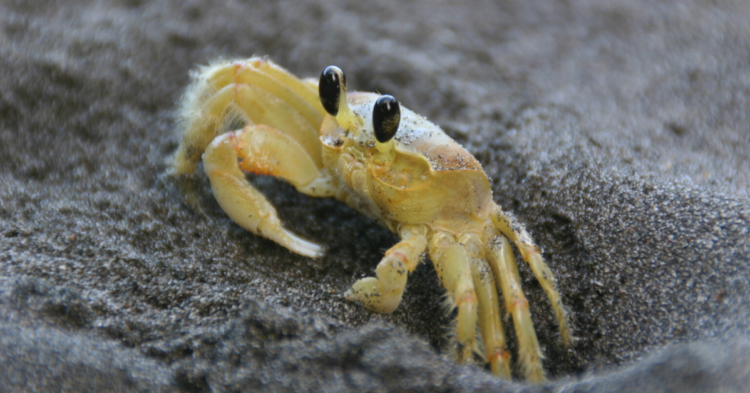Although Charles Darwin published On the Origin of Species , his seminal work laying out the theory of evolution, in 1859, there are still some things about evolution that are just plain bizarre.
Like, how does nature even come up with the platypus? I know, I know, natural selection, but come on, look at those things. Even they seem confused about what they’re supposed to be.
Evolution isn’t as neat and tidy a process as we’d like to think.
Science is a way of organizing things and investigating things to arrive at the truth, which can sometimes blind us to the fact that the nature that science studies is much more messy. There’s all kinds of weird stuff evolving, and often it’s a random mutation that proves useful to an animal and gets kept in its genetic code, passed down through enough generations to become a regular trait.
One of the weirder things that evolution does, however, is to try to turn animals into crabs.
Maybe you’ve even heard that meme on the internet about everything eventually turning into crabs.
And it turns out, that’s not just an amusingly strange thing made just for the internet.
Yes, it’s hyperbole, an over-exaggeration for dramatic effect, but it’s based on a real evolutionary process known as carcinization, in which animals have developed distinctly crab-like traits multiple times, completely independently.
Carcinization is just one example of what’s called convergent evolution.
With convergent evolution, different animals will evolve similar traits despite never having contact with each other.
Think of how bats and dolphins both developed the ability to navigate by sound even though there’s no reason for either to know the other exists, or how humans and koalas — primates and marsupials — both developed fingerprints.
Convergent evolution usually happens when two wildly different animals evolve in similar environments.
I know, bats fly and dolphins swim, so their environments are quite different in that regard — but they also both live in largely dark areas, where being able to navigate by echolocation would be a huge advantage.
And that’s also a big reason why animals have a habit of turning into crabs over time.
Crab-like creatures first showed up about 365 million years ago.

But not every animal we’d recognize as a crab is, strictly speaking, a crab. Coconut crabs, like those pictured above, aren’t true crabs, despite their shells and their claws and their spiny legs.
Between that first known crab-like creature — a decapod crustacean called Palaeopalaemon — and today, the real crabs branched off from the other crab-like creatures, which would often have the hard shells and claws of the crab, but with more elongated bodies and antennae.
However, over the eons, many of those crab wannabes started evolving the rounder, flatter bodies of true crabs.
Scientists examining the fossil record saw it happen time and again.

The long bodied crab-like creatures that resembled more of a lobster’s body would eventually lose that long tail and get wider and flatter. But, why?
Most likely, there was an advantage to it, like increased mobility for an animal that needs to scurry and burrow along the sea floor. Losing that longer tail would also give predators less to latch onto, which I think we’d all agree is preferable.
So the crab life was a good life for a lot of sea creatures.
And it still is! I mean, crabs live in salt water, in fresh water, and on land, so they’re doing quite well. Even if not absolutely everything turns into a crab, why wouldn’t more animals want to be like crabs?
Check out this video by the good folks at PBS Eons explaining the whole thing.

















































